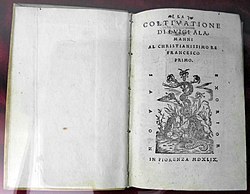History of agricultural science
[1] Scientific study of fertilizer was advanced significantly in 1840 with the publication Die organische Chemie in ihrer Anwendung auf Agrikulturchemie und Physiologie (Organic Chemistry in Its Applications to Agriculture and Physiology) by Justus von Liebig.
Composting used rotten organic materials to replenish the soil of its nutrients and dates back to tenth and twelfth century Arab writings.
Gerardus Mulder tried to determine the chemical formula for albumin and similar biological substances, but Justus von Liebig is usually cited as the early visionary of protein structure.
More significantly, Liebig analysed biological growth as constrained by limiting factors such as a shortage of phosphorus, potassium or nitrogen.
In 1900, Hugo de Vries published his findings after rediscovering Mendel's work, and in 1905 William Bateson coined the term "genetics" in a letter to Adam Sedgwick.
In 1843, John Lawes and Joseph Henry Gilbert began a set of long-term field experiments in agronomy at Rothamsted Research Station in England; some of them are still running.
[15] Over the years this organization, joined with New Farmers of America, changed the world and educated many about farming processes and encouraged agriculture participation.
National Association of Agricultural Educators (NAAE) began to help give teachers the ability to start a FFA chapter in their school system and standardize the curriculum all over the country.
